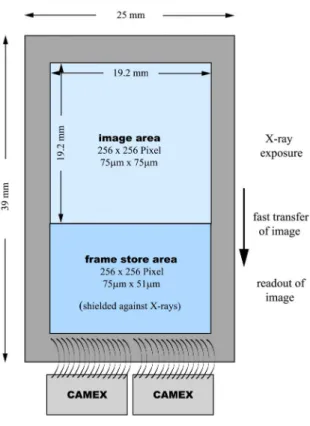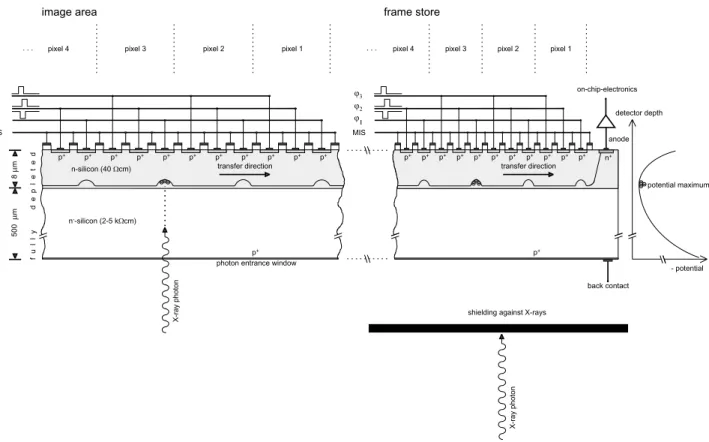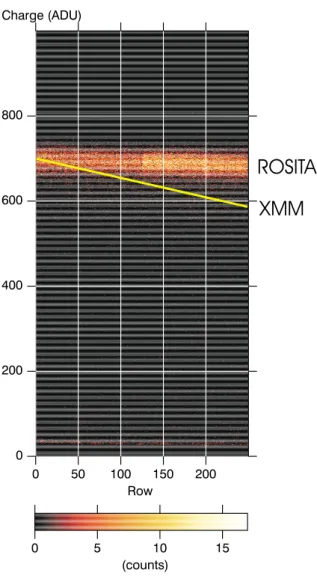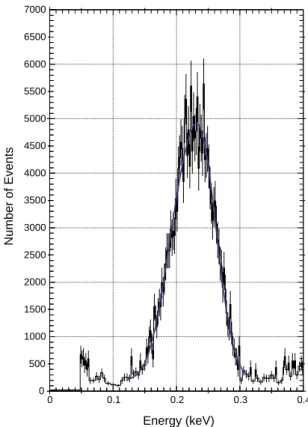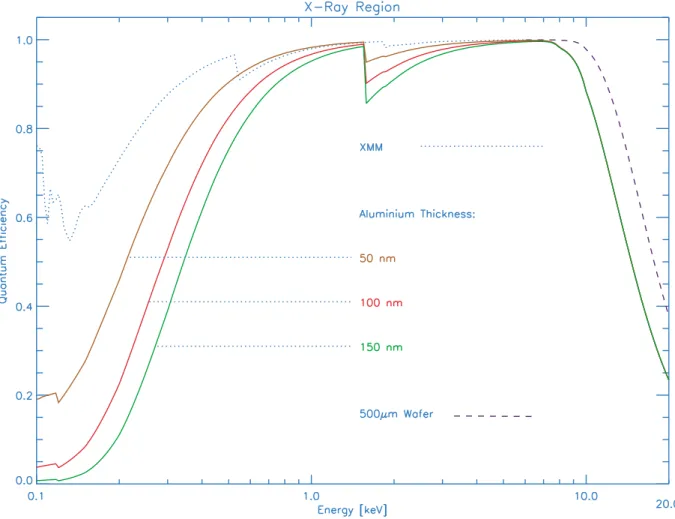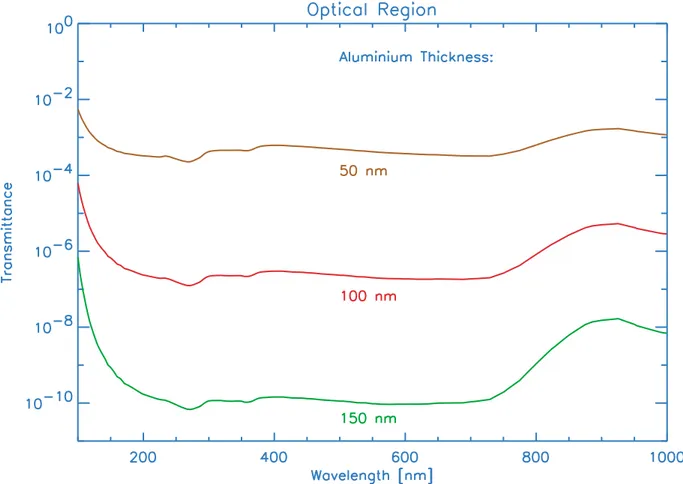Frame Store PN-CCD Detector for the ROSITA Mission
Norbert Meidingera,*, Stefan Bonerza, Heinrich Bräuningera, Rouven Eckhardtb, Jakob Englhausera, Robert Hartmannb, Günther Hasingera, Peter Hollb, Norbert Krausea, Gerhard Lutzc,
Elmar Pfeffermanna, Rainer Richterc, Heike Soltaub, Lothar Strüdera, and Joachim Trümpera
a Max-Planck-Institut für extraterrestrische Physik, Giessenbachstrasse, 85741 Garching, Germany
b PNSensor GmbH, Römerstrasse 28, 80803 München, Germany
c Max-Planck-Institut für Physik, Föhringer Ring 6, 80805 München, Germany
ABSTRACT
The pn-CCD was developed as focal plane detector for the XMM-Newton mission and operates successfully for more than 30 months in orbit without performance degradation. In order to match the new requirements of the future ROSITA mission which will perform a broad band X-ray all-sky survey, we propose an advanced type of pn-CCD. The concept and the new features of this frame store pn-CCD as part of the imaging X-ray spectrometer of ROSITA are described. First measurements with prototype devices show the improvement of detector performance in comparison to the pn-CCD on XMM-Newton. We suggest as optical filter for the observations of the X-ray sky, a thin aluminum layer deposited on the photon entrance window of the device.
Keywords: frame store pn-CCD, imaging X-ray spectrometer, pn-CCD, ROSITA, XMM-Newton
1. INTRODUCTION
The ROSITA (Roentgen Survey with an Imaging Telescope Array) mission will perform an X-ray all-sky survey in the energy band from 0.5 keV up to 12 keV.1 It is planned to accommodate the observatory on the International Space Station ISS (Fig. 1). The X-ray optics comprises seven Wolter-I telescopes with different viewing directions, each with a dedicated focal plane CCD detector. The offset angles of the telescopes prevent an overlap of the 43 arcmin large field of views in the focal plane. The seven individual CCD sensors are placed in one camera which is connected to the auxiliary systems. According to the locations of the focal points of the telescopes the detectors are arranged on a circle in equidistant positions.
A detailed description of the concept of the ROSITA X-ray camera can be found in Pfeffermann et al.2 It also includes a proposal for a graded shielding around the detector to reduce the ambient fluorescence background. Furthermore an overview of the auxiliary systems is given. Each CCD chip is mounted together with two preamplifier chips on a ceramic board. The electrical connections are realized by wire bonds. A temperature of -80ºC is planned for the operation of the CCD detectors on the ISS.
The frame store pn-CCD suggested for the ROSITA mission is introduced below. It is developed and produced in the MPI Halbleiterlabor, a common semiconductor laboratory of the Max-Planck-Institut für extraterrestrische Physik and the Max-Planck-Institut für Physik. The XMM-Newton pn-CCD had already been developed there, a 6 cm x 6 cm large detector array monolithically integrated on a single silicon wafer. The devices are fabricated in planar technology but in contrast to other facilities, both wafer surfaces are processed which is mandatory due to the detector concept.
* Correspondence: E-mail: nom@hll.mpg.de
2. CONCEPT OF THE FRAME STORE PN-CCD
The frame store pn-CCD is based on the concept of the pn-CCD developed for the XMM-Newton mission.3,4 The device is fully depleted by reverse bias voltages which are applied to the pn-junctions on the front side and backside of the device (see Fig. 3). This ensures high quantum efficiency for higher energy X-ray detection because the quantum efficiency is then determined by the thickness of the depletion depth. The X-ray photons enter the detector from the backside through a large area homogeneous ultra-thin diode which results in an excellent low energy response. The generated signal electrons are collected, stored and transferred relatively deep within the ultra-pure n-doped silicon. The readout of the transfer channels is performed in parallel to achieve a high frame rate. A low noise spectroscopic performance is realized by on-chip integrated JFET electronics. The proven radiation hardness of the pn-CCD is also true for the frame store pn-CCD because the same reasons apply for it. These are in particular the fast transfer of the signal charges and the self-shielding of the backside illuminated device against low energy protons which are focussed by the telescope on the detector.5
Figure 1: The ROSITA X-ray observatory (front) is planned to be accommodated on the International space Station ISS (in the back). An individual frame store pn-CCD is assigned to each of the seven telescopes. A single ROSITA telescope of Wolter-I type comprises 27 mirror shells with a focal length of 1.6 m.
Figure 2: Schematics of the ROSITA frame store pn-CCD with dimensions. The device is subdivided into the image area, the frame store region and the on-chip electronics which is connected by wire bonds to two 128-channel VLSI JFET-CMOS CAMEX amplifier chips. An image (256 x 256 pixels) is transferred within 100 µs to the frame store area. The readout of the image is done there within 5 ms.
on-chip-electronics detector depth
- potential potential maximum
500 mm 8mm
n--silicon (2-5 kWcm)
anode
transfer direction j
j2 j3
1 MIS
p+ p+ p+ p+ p+ p+ p+ p+ p+ p+ p+ n+
photon entrance window
p+
back contact
f u l l y d e p l e t e d
pixel 1 pixel 2
pixel 3 pixel 4
. . .
X-ray photon
p+ p+ p+ p+ p+ p+ p+ p+ p+ p+ p+
p+ pixel 1 pixel 2
pixel 3 pixel 4
. . .
transfer direction j
j2 j3
1 1
MIS
image area frame store
shielding against X-rays
X-ray photon
n-silicon (40 Wcm)
Figure 3: Schematic cross section through a frame store pn-CCD along a transfer channel (left hand) and shape of the electric potential vs. depth (right hand). The device is depleted over its full thickness of about 500 PE\UHYHUVHELDVHG diodes on the front side and backside of the CCD. The X-rays enter the image area of the CCD from the backside. The generated signal electrons are stored and transferred in a depth of about 7 PEHORZWKHIURQWVLGH(DFKLQGLYLGXDO channel is terminated by an anode which is connected to the gate of an on-chip JFET for signal amplification.
A new feature of the proposed CCD is the frame store section which has been added to the image area and given the device its name. The frame store concept allows for a fast transfer of the complete image into the storage area which is shielded against the X-rays. Thus the time consuming readout and amplification can be carried out while simultaneously X-ray photons are accumulated in the image area. By this method the probability of “out of time” (OOT) event occurrence is considerably reduced. OOT events are caused when an X-ray hits the detector during the transfer of the image. The event position information in transfer direction is then incorrect.
The improvements in device design and fabrication are presented in the next section with the related performance parameters.
3. PERFORMANCE
The image section of the ROSITA frame store pn-CCD has been optimized to match to the properties of the X-ray imaging optics. It is built up by 256 rows and 256 channels, i.e. 65,536 pixels, and covers an area of 19.2 mm x 19.2 mm (Fig. 2). The pixel size of 75 P x 75 PFRUUHVSRQGVWRDERXW arcsec in the focal plane. The frame store section comprises the same number of pixels but of smaller format (51 P[ 75 PWRVKRUWHQWKHGHYLFH dimensions.
The fast transfer of the image into the frame store will be carried out in about 100 V7KHVLJQDOVRIWKHSDUDOOHO transfer channels are simultaneously processed in the on-chip electronics and transferred to two 128-channel VLSI JFET-&026&$0(;DPSOLILHUV7KXVWKHUHDGRXWWLPHLV VSHUURZDQG ms per image. The CAMEX is only powered during readout to keep the heat dissipation in the focal plane small. For this reason a frame rate of 20 images per second is planned. With regard to the scan motion of the telescopes, the cycle time of 50 ms maintains still a high angular resolution of better than 15 arcsec.2 Thus an OOT event probability of 0.2% is achieved for the ROSITA CCD which is by a factor of about 30 smaller than what we obtain for the pn-CCD on XMM-Newton in fullframe mode operation.
Our first measurements with prototype frame store pn-CCDs showed already an electronic noise of only 3.5 electrons equivalent noise charge (ENC). This optimization by about 30% in comparison to the XMM-Newton pn-CCD was accomplished by a reduction of the readout capacitance from 120 fF to only 50 fF. The main improvement for that was the application of a new method for the charge clear on the anode.6
We measured a charge transfer inefficiency (CTI) of 5 x 10-5 per pixel transfer for Al-K X-rays (1486 eV) at a temperature of -90ºC, the operating temperature of the pn-CCD on XMM-Newton. This results in an improvement by a factor of 13 compared to the XMM-Newton detector (see Fig. 4).6 Accordingly we obtain a signal charge loss of only 1.3% for the ROSITA CCD-prototype after 256 pixel transfers. Nevertheless the signal amplitudes have to be corrected for the transfer loss, as in the case of the pn-CCD on XMM-Newton, to obtain highest energy resolution.
0 5 10 15
(counts)
0 50 100 150 200
0 200 400 600 800
Row Charge (ADU)
XMM ROSITA
Figure 4: The scatterplot shows the signal amplitudes of Al-K X-rays (in units of adu) as function of the number of pixel transfers for a ROSITA frame store pn-CCD prototype device. For comparison, the corresponding curve of the XMM-Newton pn-CCD is plotted. The charge transfer losses of the frame store pn-CCD are by a factor of 13 smaller than that of the XMM-Newton pn- CCD.
The benefit of low electronic noise and small CTI for the energy resolution is shown in the energy spectrum of the Al-K line (1486 eV) in Fig. 5. The FWHM of the line is determined to 76 eV, an energy resolution which is approximately 30% better than that measured with the XMM-Newton pn-CCD for this energy.
Number of Events
Energy (keV)
0 0.5 1 1.5 2 2.5
0 500 1000 1500 2000 2500 3000 3500 4000 4500 5000 5500 6000
Number of Events
Energy (keV)
0 0.1 0.2 0.3 0.4
0 500 1000 1500 2000 2500 3000 3500 4000 4500 5000 5500 6000 6500 7000
Figure 5: Spectrum of the Al-K line measured with a frame store pn-CCD. The energy resolution was measured to 76 eV FWHM.
Figure 6: The spectrum of the C-K line demonstrates the excellent low energy response. The peak is well separated from noise and shows a FWHM of 82 eV.
The low energy response of the detector was substantially improved by the use of <100> silicon instead of <111>
material. Fig. 6 shows the spectrum of the C-K line (277 eV). The line is well separated from the noise peak and its FWHM was determined to 82 eV. A slightly incomplete charge collection in the ultra-thin photon entrance window results in a small shift of the peak position towards a lower energy. This and consequently the FWHM will be optimized for the next devices by a re-implant of the entrance window diode with phosphorus to enhance the drift field in the pn- junction. A method which has already been tested successfully.7
The thickness of the CCDs will be increased for the next device production from 300 P WR P 7KH WKHUHE\
enhanced depletion thickness improves the quantum efficiency for high X-ray energies, e.g. from 90% to 98% at a photon energy of 10 keV and from 73% to 89% at 12 keV. By that, the quantum efficiency of the CCD is in the full energy band of the ROSITA all-sky survey above 90% (see Fig. 7).
The fabrication technology of the devices allows for a deposition of a very thin and homogeneous aluminum layer on top of the photon entrance window. The aluminum layer can be applied as a filter for the suppression of optical light which is indispensable for an observation of the X-ray sky with high energy resolution. Such a filter can replace fragile self-supporting filter foils which are critical in particular during the spacecraft launch. The system consisting of the
CCD and a 100 nm thick aluminum layer, shows a quantum efficiency higher than 80% in the full energy band of the ROSITA all-sky survey from 0.5 keV up to 12 keV (see Fig. 7). An aluminum thickness of 100 nm suppresses the transmission in the optical band by about 6 orders of magnitude (see Fig. 8).
Figure 7: Resulting quantum efficiencies (QE) after deposition of a 50 nm, 100 nm or 150 nm thick aluminum layer on top of the entrance window of the CCD for the purpose of an optical filter. The QE of the frame store pn-CCD and a 100 nm aluminum layer, is higher than 80% in the full energy band from 0.5 keV to 12 keV. For comparison, the QE of the XMM-Newton pn-CCD without filter is shown with a clearly visible absorption edge at 0.54 keV due to an oxide layer on top of the entrance window. The increase of device thickness from 300 PWR PIRUWKH526,7$GHWHFWRU improves the QE for photon energies above 7 keV, displayed in the figure by the dashed line.
Single events were the most frequent pattern type for the XMM-Newton pn-CCD due to the large pixel format of 150 P x P. For the ROSITA CCD the pixel format is smaller and the detector thickness is larger which results in a longer drift time of the generated signal electrons to the potential maximum. For those reasons we obtain an almost equal probability for the occurrence of single, double, triple and quadruple events, but no higher multi-events appear.
The spreading of signal charges over more than one pixel requires a more complex event reconstruction concerning the X-ray energy but allows for an improvement of position resolution.
The frame store pn-CCD area, other than the entrance window and the bond pads, is planned to be protected with a passivation layer made up of benzocyclobutene (BCB). This procedure prevents short-circuits due to conductive
particles which can be caused during the assembly of the camera. Low energy Auger electrons generated in the low-Z material of the graded shielding in the vicinity of the CCD are furthermore stopped in this passivation layer.
Figure 8: Transmittance of aluminum layers of various thicknesses (50 nm, 100 nm and 150 nm) for the optical wavelength region.
4. SUMMARY AND OUTLOOK
The concept of the frame store pn-CCD developed for the ROSITA mission and the first performance measurements with prototype devices show substantial improvements compared to the pn-CCD which is already successfully operating on the XMM-Newton observatory. This concerns in particular the occurrence of out of time events, the energy resolution as well as the position resolution and the quantum efficiency. A further improvement of the by now excellent low energy response is expected for the currently fabricated devices. The proposed methods to make the camera safer and more robust will be tested in the near future.
After a further optimization mainly regarding the readout speed, the frame store pn-CCD could be considered as an option for the wide field imager of ESA’s future X-ray mission XEUS.
ACKNOWLEDGMENTS
The authors wish to thank all people contributing to this paper, especially Susanna Kemmer for mounting and bonding of the devices and the staff of the MPI Halbleiterlabor. Financial support by the Heidenhain foundation is gratefully acknowledged.
REFERENCES
1. P. Predehl, “ROSITA: scientific goal and mission concept”, in X-ray and Gamma-ray Telescopes and Instruments for Astronomy, J. E. Trümper and H. D. Tananbaum, eds., Proc. SPIE 4851, 2002.
2. E. Pfeffermann, S. Bonerz, H. Bräuninger, et al., “Concept of the ROSITA X-ray Camera”, in X-ray and Gamma- ray Telescopes and Instruments for Astronomy, J. E. Trümper and H. D. Tananbaum, eds., Proc. SPIE 4851, 2002.
3. N. Meidinger, H. Bräuninger, U. Briel, et al., “The pn-CCD detector for XMM and ABRIXAS”, Proc. SPIE 3765, pp. 192-203, 1999.
4. L. Strüder, U. Briel, K. Dennerl, et al., “The European Photon Imaging Camera on XMM-Newton: The pn-CCD camera”, Astronomy & Astrophysics, vol. 365, 1, pp. L18-L26, 2001.
5. L. Strüder, N. Meidinger, E.Pfeffermann, et al., “X-ray pn-CCDs on the XMM-Newton Observatory”, Proc. SPIE 4012, pp. 342-351, 2000.
6. N. Meidinger, S. Bonerz, R. Eckhardt, et al., “First measurements with a frame store pn-CCD X-ray detector”, Proc. of the 9th European Symposium on Semiconductor Detectors, 2002, to be published in Nucl. Instr. & Meth.
7. R. Hartmann, D. Hauff, P. Lechner, et al., “Low energy response of silicon pn-junction detector”, Nucl. Instr. & Meth., A 377, pp. 191-196, 1996.
